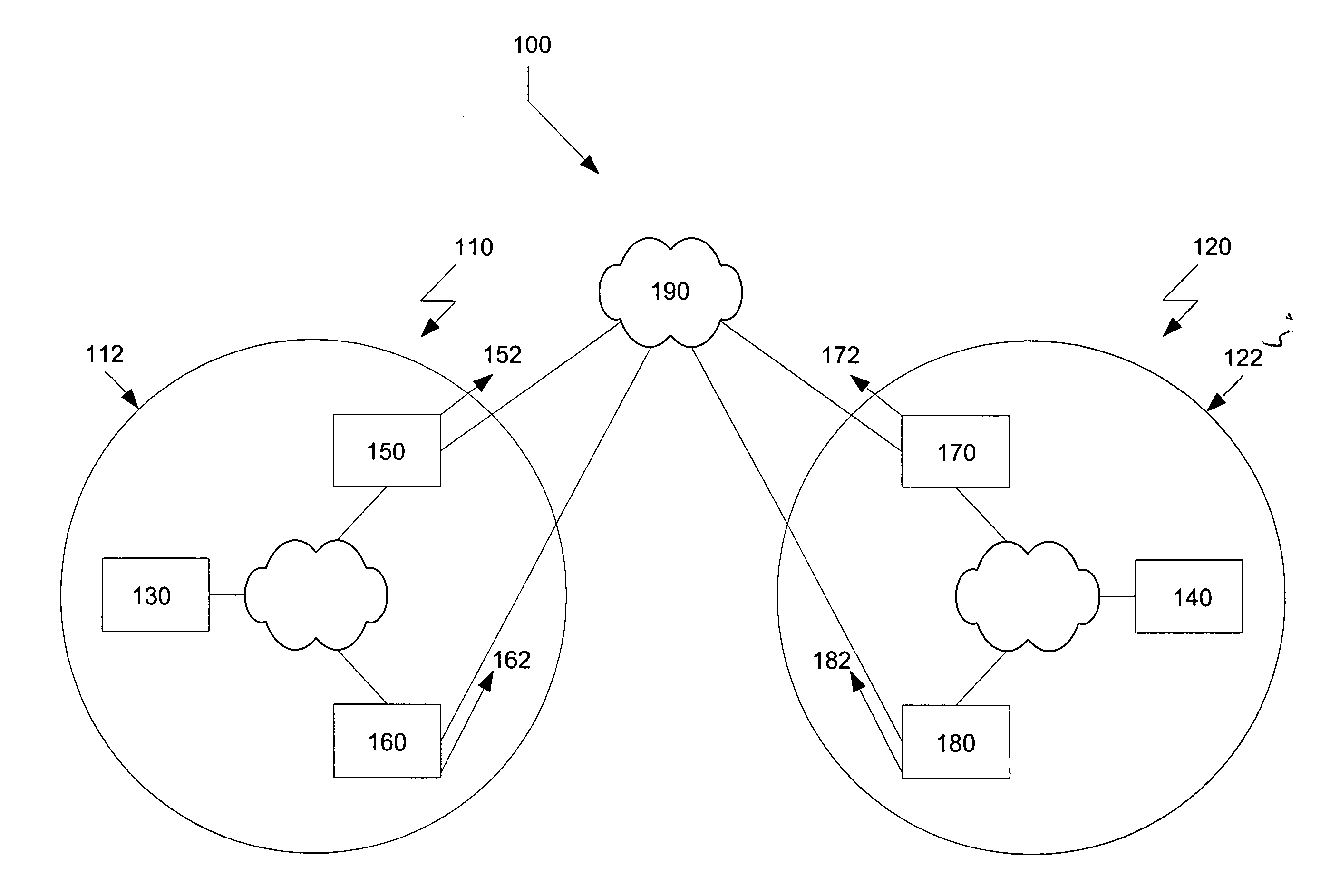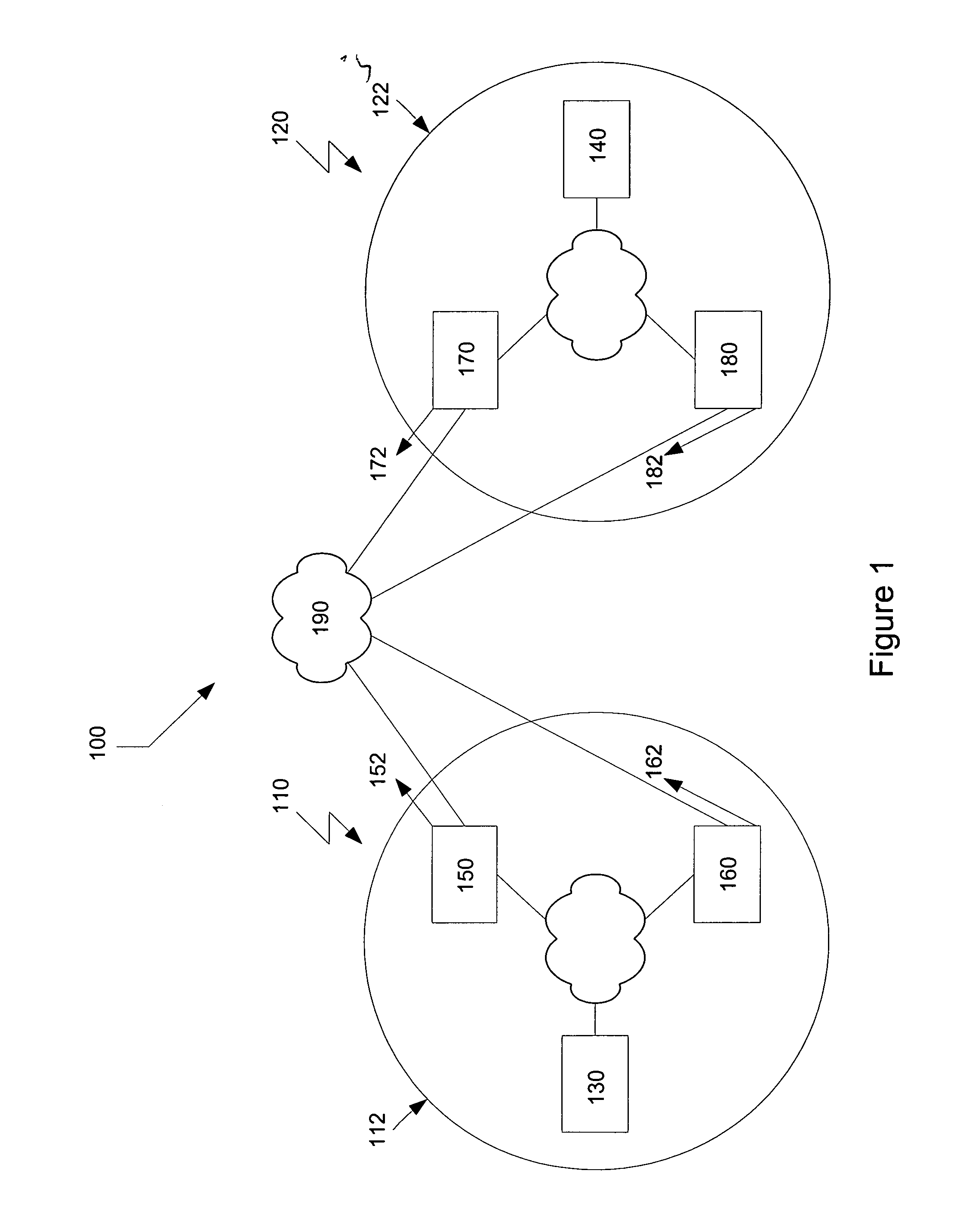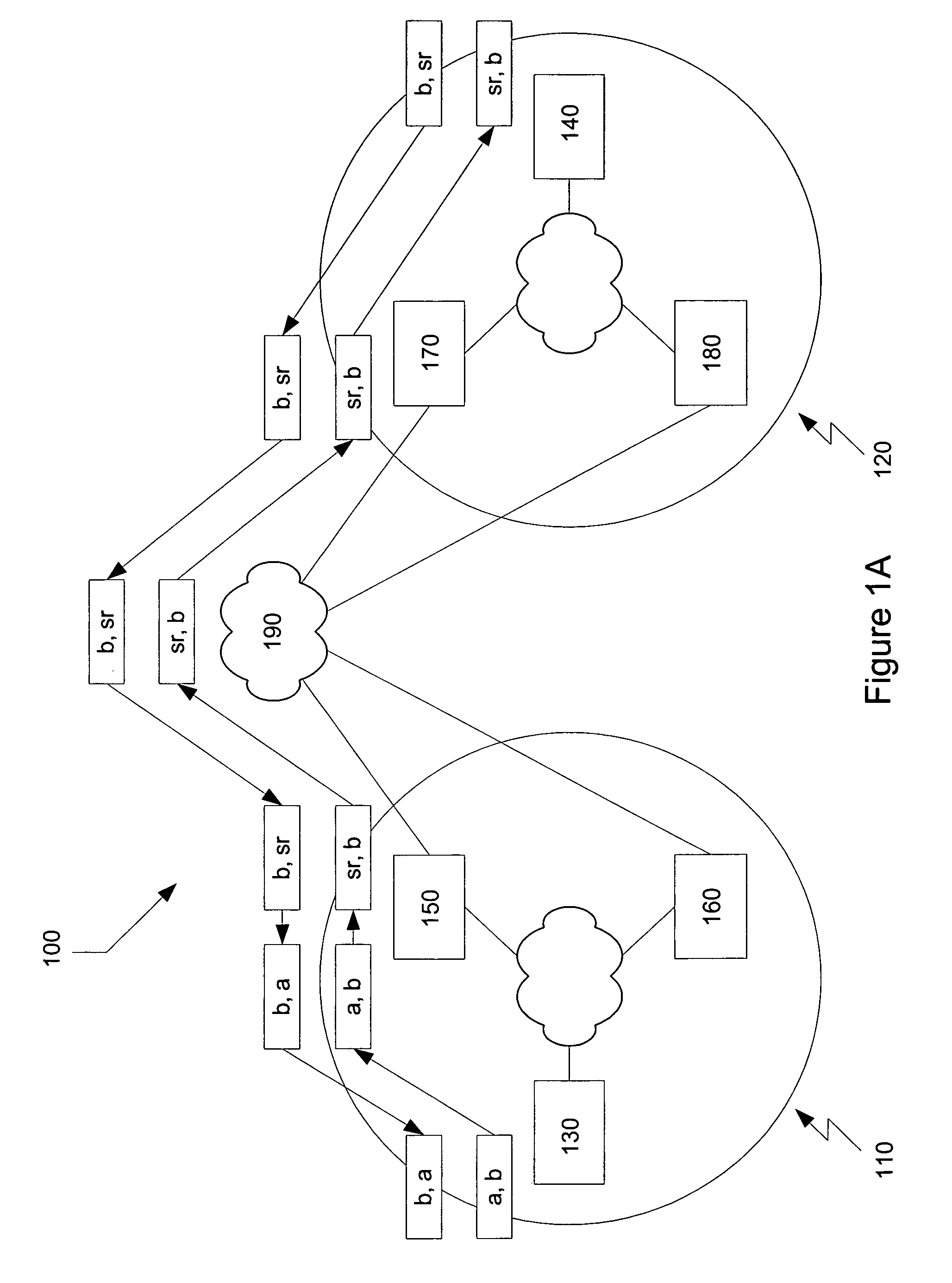Method for bi-directional symmetric routing in multi-homed networks with stateful firewalls
a multi-homed network and bi-directional symmetric technology, applied in the field of bi-directional symmetric routing in multi-homed networks with stateful firewalls, can solve the problems of tcp session failure, difficult task of routing symmetry recognition, and critical issue of routing symmetry
- Summary
- Abstract
- Description
- Claims
- Application Information
AI Technical Summary
Benefits of technology
Problems solved by technology
Method used
Image
Examples
Embodiment Construction
[0018]The present invention provides for bi-directional conditional network address translation with exterior routing which overcomes the shortcomings described above while preserving the beneficial features. The present invention extends network address translation by making it conditional and combining it with exterior routing to provide an efficient method of bidirectional symmetric routing. In the present invention, conditional network address translation is different than the conditional network translation in the prior art. In the prior art, conditional network address translation constitutes substituting the source address of a packet only when the original source address is from a particular block. In the present invention, conditional network address translation constitutes substituting the source address of a packet only when the destination address of the packet is from a particular address block. The method of the present invention relies on network addressable translati...
PUM
 Login to View More
Login to View More Abstract
Description
Claims
Application Information
 Login to View More
Login to View More - R&D
- Intellectual Property
- Life Sciences
- Materials
- Tech Scout
- Unparalleled Data Quality
- Higher Quality Content
- 60% Fewer Hallucinations
Browse by: Latest US Patents, China's latest patents, Technical Efficacy Thesaurus, Application Domain, Technology Topic, Popular Technical Reports.
© 2025 PatSnap. All rights reserved.Legal|Privacy policy|Modern Slavery Act Transparency Statement|Sitemap|About US| Contact US: help@patsnap.com



